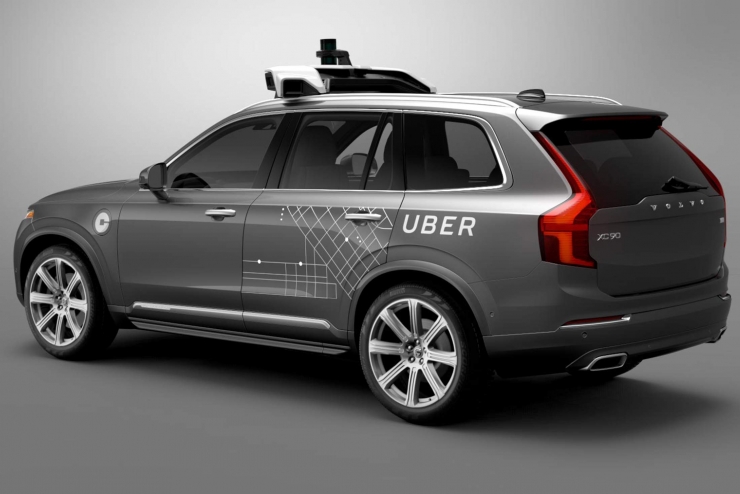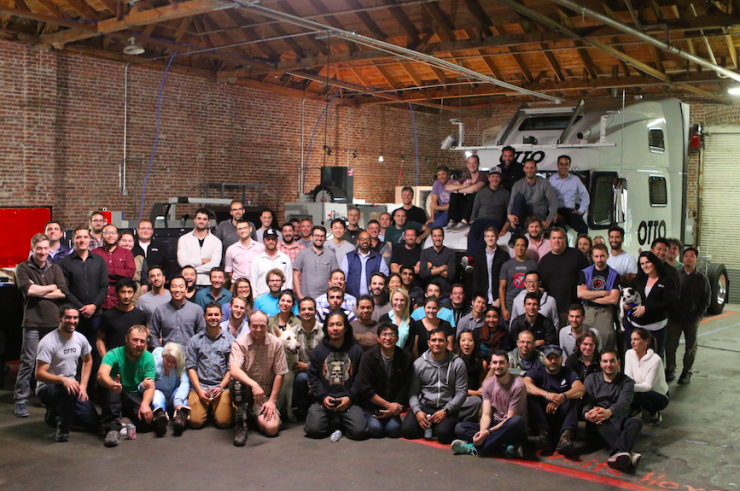
Although Uber China has been acquired by Drip, Uber announced three major news to the outside world on the other side of the ocean:
The Uber fleet of driverless cars will debut in Pittsburgh at the end of August, when users can enjoy this taxi service at random;
Volvo and Uber reached a cooperation and the two sides jointly invested US$300 million to develop self-driving cars, which are expected to go on road in 2021;
Uber will acquire Otto, an unmanned technology company, for not less than $680 million.
This is the latest development since Uber announced its entry into the driverless field in 2015.
According to Bloomberg, Uber CEO Travis Kalanick flew to Pittsburgh at the end of 2014. The reason for going to this city is that Carnegie Mellon University’s robotics program is located in Pittsburgh, where many well-known automation professionals have been trained. For example, Sebastian Thrun, the father of Google’s self-driving car, and Chris Urmson, former head of Google’s driverless vehicle.
In early 2015, Uber and Carnegie Mellon secretly established an organization called Advanced Technologies Center in Pittsburgh to conduct research and development of self-driving cars.
In May of last year, Uber took the top 50 robotic experts of the National Robotics Engineering Center at Carnegie Mellon University and almost emptied the university’s robot R&D department.
This includes several academic influencers such as Anthony Stentz, NREC Dean, and Jean-Sébastien Valois, a Senior Commercialization Specialist who has worked for NREC for 12 years. In addition, Uber has almost taken away the Microsoft Bing Map team.

Volvo will deliver 100 specially modified SUVs to Uber at the end of this year (Image courtesy of Courtesy Uber)
This kind of digging seems to have paid off at this time.
At the end of August, Uber will allow passengers in downtown Pittsburgh to use mobile phones to call autonomous vehicles. This is considered to be an epoch-making event. This has not been done by any car company or technology company before.
In a recent Bloomberg report, he described the process of Kalanick’s recruitment of talents.
Prior to founding Carnegie Robotics, John Bares spent 13 years at the National Robotics Engineering Technology Center at Carnegie Mellon University, which specializes in producing accessories for mines, agriculture and military robots.
According to his recollection: "Kalanick had an idea that he wanted to invest in developing autonomous driving technology. I rejected him three times, but his ideas are still very attractive."
In the end, Bares joined Uber in January 2015. Before the beginning of 2016, he had helped Uber recruit hundreds of engineers, robotics experts, and even some auto mechanics. Uber's goal is to replace Uber’s more than one million private car drivers with machine driving, and this must be accomplished as quickly as possible.

Otto team (picture from Uber )
In July, Uber signed an agreement with driverless truck startup Otto to prepare to bring this 91-employee start-up company into the bag.
Otto was founded at the beginning of this year. Several founders were key members of Google's auto-pilot project team. They left Google in January this year. According to Otto co-founder Anthony Levandowski, “We are really excited about the development of services that can be released as early as possible.†This somewhat hints at the slow progress of the commercialization of Google’s unmanned projects.
Levandowski was an engineer at Google’s self-driving car team. He created Otto with Lior Ron, who had been a product manager for 5 years in Google Maps, Claire Delaunay, a Google robot project team leader, and Don Burnette, another senior Google engineer.
Kalanick and Levandowski met for the first time at the 2012 TED Conference. At the time Levandowski showed Google’s early version of an auto-driving car prototype. Kalanick said on the spot that he wanted to buy 20 cars. He said with a smile: "It will obviously become the next direction of development."
Kalanick has been lobbying Levandowski since the spring of this year. The two often walk together in the evening and Kalanick took the opportunity to make a purchase transaction. Each of them left their own office to avoid being seen by employees, the media, or competitors. They will buy some food and meet at the appointed place.
In Kalinick's view, the acquisition is a way to further accumulate talent for autonomous driving. He said: "If Uber wants to catch up with Google and become the leader in the field of automated driving, it must have the best talent." Levandowski said that merging with Uber can bring Otto self-driving trucks to market faster.
When Uber's acquisition of Otto's deal is completed, Levandowski will serve as Uber’s autopilot project leader.
Please pay attention to Lei Feng Network (search "Lei Feng Network" public number concerned) 's "New wisdom drive." WeChat added "AI-Drive" or "New Driver" to subscribe to the public number.
